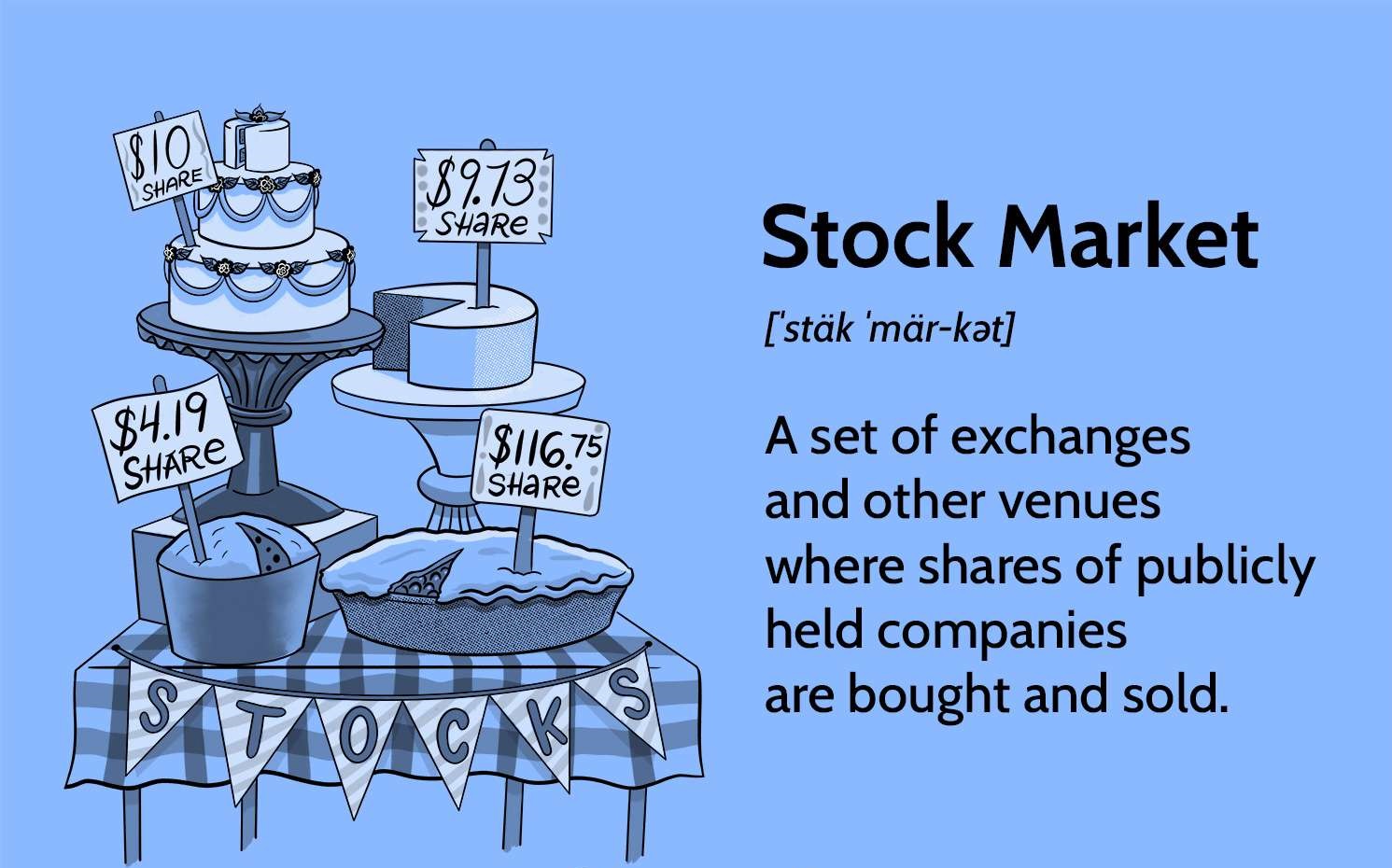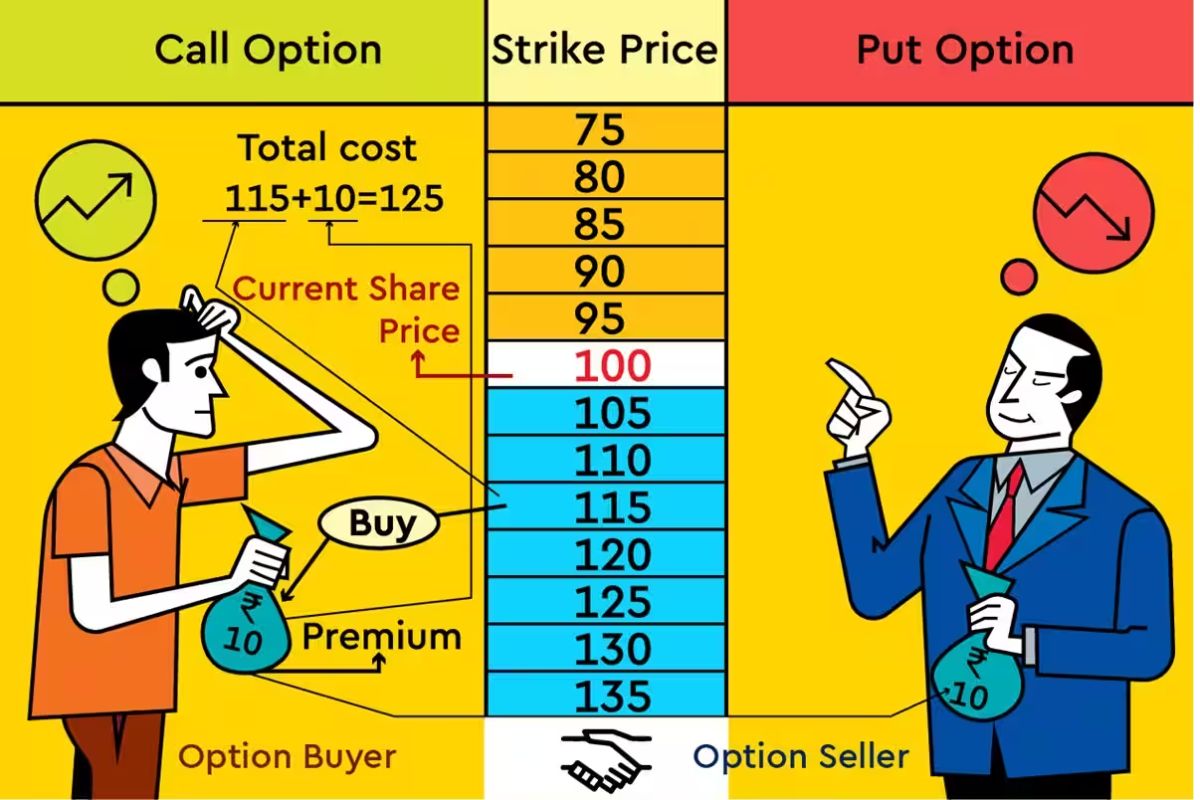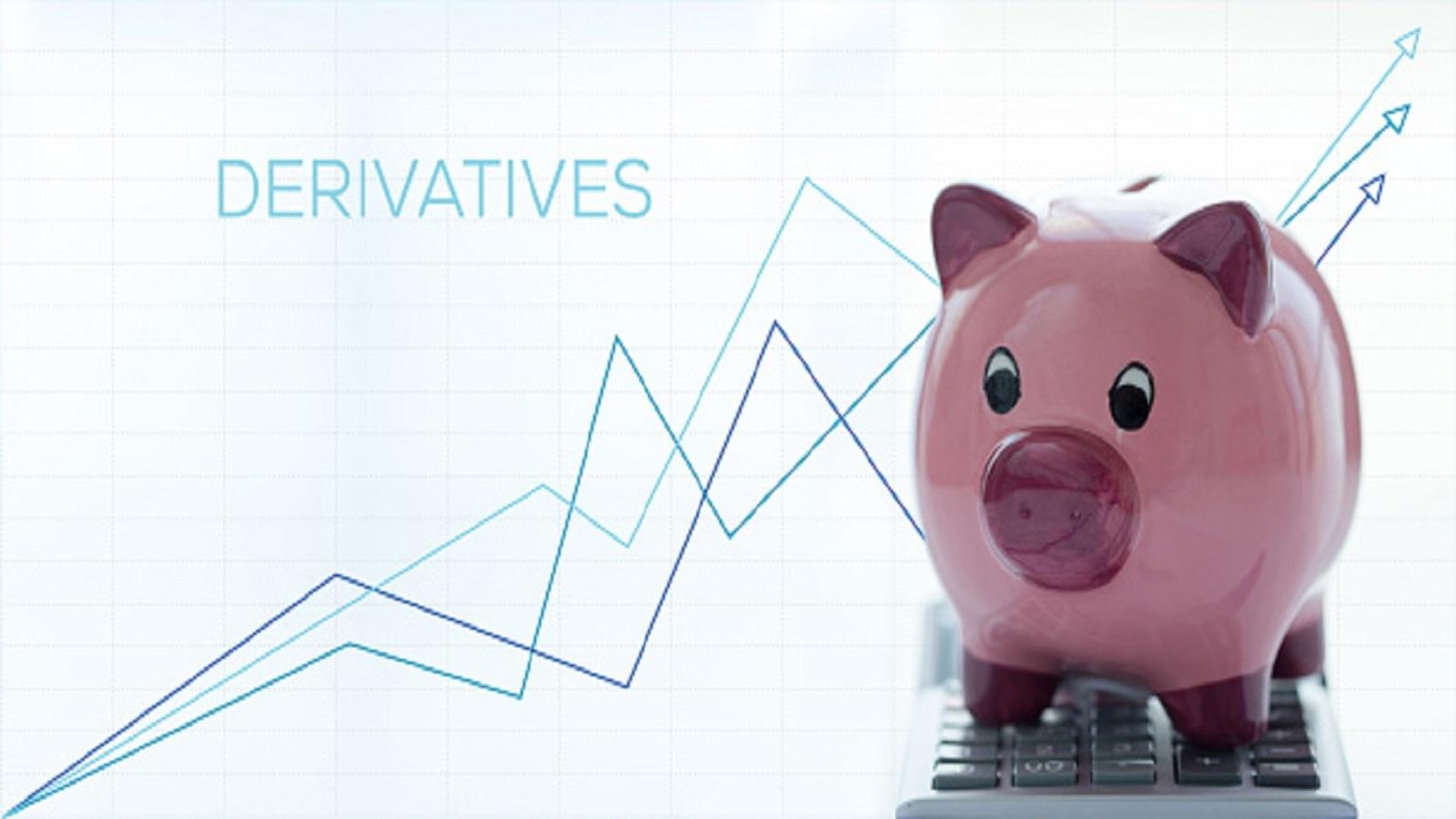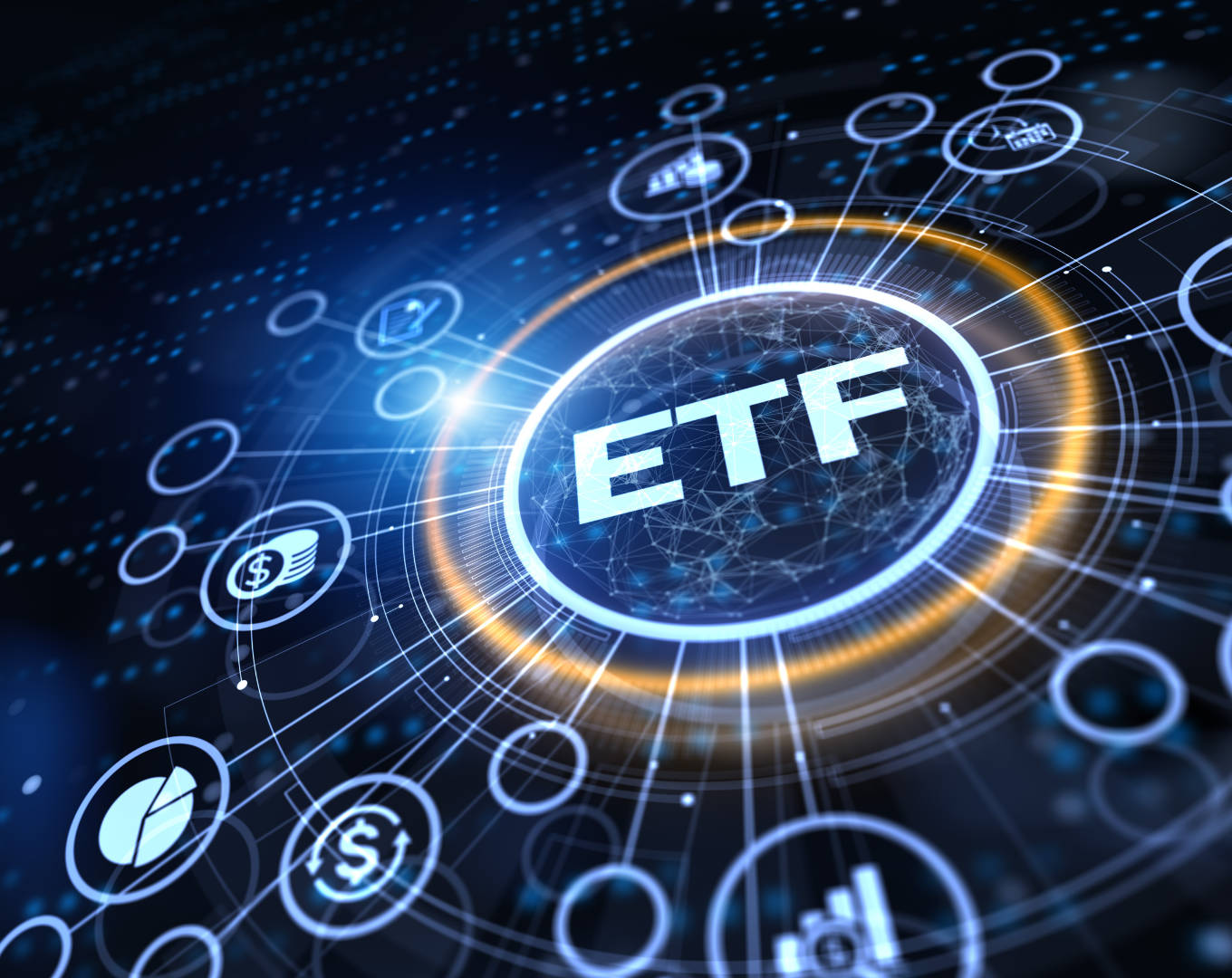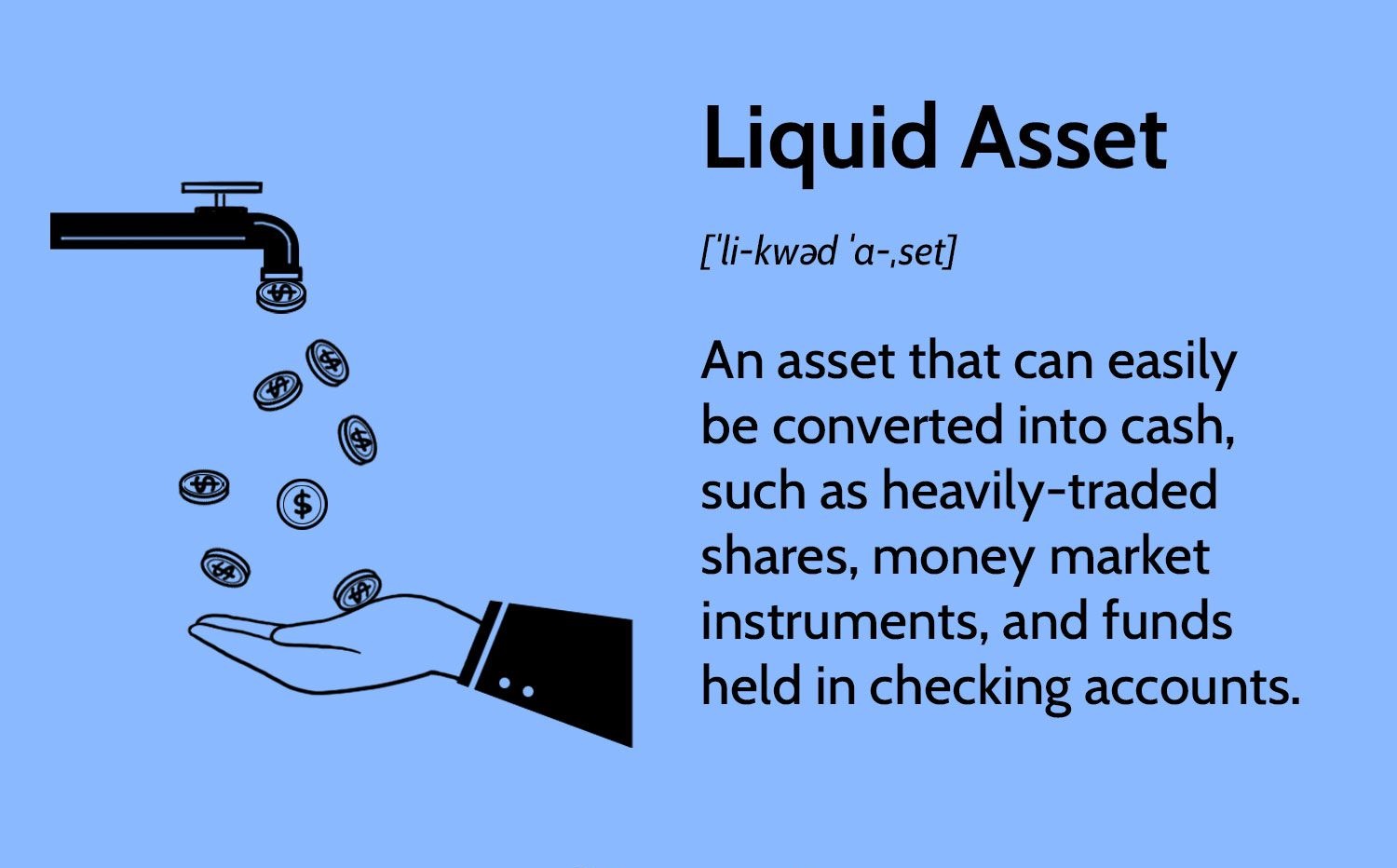Understanding the Stock Market
The stock market is a dynamic and fascinating entity that plays a crucial role in the economy. It serves as a platform where individuals and institutions can buy and sell investments, primarily in the form of stocks, bonds, and other financial instruments. With its complex workings, understanding the stock market can be daunting for beginners, but with some knowledge and research, one can navigate this intricate landscape.
At its core, the stock market represents the collective buying and selling of shares in publicly traded companies. When individuals buy these shares, they effectively become partial owners of the company and have the potential to benefit from its growth and success. On the other hand, selling shares allows investors to divest their ownership and potentially profit from any increase in the stock’s value.
One key aspect to comprehend is that the stock market is influenced by various factors such as economic conditions, company performance, and investor sentiment. These factors can cause stock prices to fluctuate, offering both opportunities and risks for investors.
The stock market operates through exchanges, which serve as centralized marketplaces for trading securities. These exchanges provide a platform where buyers and sellers can come together to execute transactions. The most well-known stock exchanges include the New York Stock Exchange (NYSE), Nasdaq, London Stock Exchange, and Tokyo Stock Exchange.
Investors can participate in the stock market through brokerage firms, which act as intermediaries between buyers and sellers. They facilitate the trading process by providing an online trading platform or connecting investors with traders on the exchange floor.
It is essential to recognize that investing in the stock market carries risks. The value of stocks and other investments can fluctuate significantly, and investors may experience losses. However, over the long term, historical data has shown that the stock market generally outperforms other investment options, offering potential growth and returns.
As an investor, it is crucial to conduct thorough research and analysis before making investment decisions. This can involve studying a company’s financial statements, analyzing market trends, and staying informed about economic news and events that may impact the stock market.
Understanding the stock market is an ongoing learning experience. By continuously expanding your knowledge and staying informed about market dynamics, you can make informed investment choices and potentially benefit from the opportunities presented by the stock market.
The Role of Exchanges in Investing
Exchanges play a vital role in the world of investing by providing a structured marketplace where buyers and sellers can trade financial assets, such as stocks, bonds, and derivatives. These exchanges offer a range of benefits that enable investors to participate in the market efficiently and effectively.
One key role of exchanges is to provide liquidity to the market. Liquidity refers to the ease with which an asset can be bought or sold without significantly impacting its price. Exchanges facilitate liquidity by bringing together a large number of buyers and sellers, creating a competitive environment that ensures smooth and efficient trading.
Exchanges also play a crucial role in price discovery. By providing a central platform for trade execution, exchanges allow for transparent pricing based on the forces of supply and demand. This price discovery process ensures that assets are correctly valued, enabling investors to make informed decisions based on market information.
Another important function of exchanges is to ensure market integrity. Exchanges enforce rules and regulations to maintain a fair and orderly marketplace. They monitor trading activities and detect any suspicious or manipulative behavior, helping to maintain investor confidence and trust in the market.
Exchanges provide a level playing field for all market participants. Whether an individual retail investor or a large institutional investor, anyone can access the exchange and trade securities. This democratization of access ensures that investors of all sizes have equal opportunities to participate and benefit from the market.
Moreover, exchanges offer a range of investment products and asset classes to cater to different investor preferences and risk profiles. In addition to traditional stocks and bonds, exchanges provide avenues for trading options, futures, ETFs (Exchange-Traded Funds), and other financial instruments. This diversification allows investors to build a well-rounded portfolio and manage risk effectively.
Exchanges also contribute to economic growth by facilitating capital formation. By allowing companies to raise funds through the sale of stocks and bonds, exchanges enable businesses to finance their operations, expand, and create job opportunities. This process of capital formation plays a vital role in driving economic progress.
Overall, exchanges play a crucial role in the investing ecosystem. They provide the necessary infrastructure, transparency, and regulation to facilitate the buying and selling of financial assets. Whether you are an individual investor or an institutional player, understanding the role of exchanges is essential for navigating the world of investing and capitalizing on the opportunities it offers.
What Is the Place Where Investments Are Bought and Sold Called?
The place where investments are bought and sold is commonly referred to as a financial market. In a broader sense, it encompasses various platforms and exchanges where investors can trade different types of securities and financial instruments.
One of the most well-known types of financial markets is the stock market. This is where stocks, or shares of publicly traded companies, are bought and sold. The stock market can be further divided into different exchanges, such as the New York Stock Exchange (NYSE) and the Nasdaq, where investors can trade stocks listed on these exchanges.
Aside from the stock market, there are also other types of markets where investments can be traded. For example, the bond market is where bonds, which represent debt issued by corporations or governments, are bought and sold. The bond market allows investors to trade fixed-income securities, which offer regular interest payments to the bondholders.
Another significant financial market is the foreign exchange market, often abbreviated as Forex. This market facilitates the buying and selling of different currencies. Forex trading is essential for businesses involved in international trade, as well as investors looking to profit from fluctuations in currency values.
Commodities markets are yet another important segment of financial markets. These markets involve the trading of physical goods such as gold, oil, agricultural products, and metals. Commodity markets allow investors to speculate on the price movements of these raw materials and manage risks associated with their production and consumption.
Additionally, there are derivative markets where investors can trade financial contracts whose value is derived from an underlying asset. This includes options, futures, and swaps. These derivative products provide investors with opportunities to hedge against risks, speculate on price movements, and manage their exposure to various financial assets.
With advancing technology, electronic trading platforms have become increasingly prevalent. These platforms enable investors to buy and sell investments online, providing greater accessibility and convenience. Online brokerage accounts and trading apps have made it easier for individuals to enter the financial markets and participate in investment activities.
Overall, the place where investments are bought and sold encompasses a wide range of financial markets and platforms. Whether it’s the stock market, bond market, foreign exchange market, commodities market, or derivatives market, these markets provide opportunities for investors to trade various types of investments. Understanding the dynamics of these markets and the instruments they offer is key to navigating the world of investments and making informed decisions.
Different Types of Investment Exchanges
Investment exchanges come in various forms, each catering to specific types of investments and trading activities. These exchanges provide platforms where buyers and sellers can trade financial assets, ensuring liquidity, transparency, and fair pricing. Let’s explore some of the different types of investment exchanges.
1. Stock Exchanges: Stock exchanges, such as the New York Stock Exchange (NYSE) and Nasdaq, are dedicated to trading stocks or shares of publicly listed companies. These exchanges provide a regulated marketplace where investors can buy and sell stocks, allowing individuals and institutions to participate in the ownership of companies and potentially benefit from their growth and profitability.
2. Bond Exchanges: Bond exchanges specialize in trading bonds, which are debt securities issued by governments, municipalities, and corporations. Bond exchanges facilitate the trading of fixed-income securities, enabling investors to profit from interest payments and potential price fluctuations.
3. Foreign Exchange (Forex) Markets: The Forex market is the largest and most liquid market globally. It involves the trading of different currencies, allowing investors to speculate on currency price movements. The Forex market is vital for international trade and plays a significant role in managing currency risk for businesses operating in multiple countries.
4. Commodity Exchanges: Commodity exchanges specialize in the trading of physical goods such as agricultural products, metals, energy commodities, and precious metals. These exchanges provide a platform for investors to speculate on the price movements of commodities, manage risks, and hedge against fluctuations in the prices of raw materials.
5. Derivatives Exchanges: Derivatives exchanges facilitate the trading of financial contracts whose values are derived from underlying assets such as stocks, bonds, commodities, or currencies. Instruments like options, futures, and swaps are commonly traded on derivatives exchanges. These exchanges provide opportunities for investors to hedge against risks, speculate on price movements, and manage their exposure to various financial assets.
6. Cryptocurrency Exchanges: With the rise of cryptocurrencies like Bitcoin and Ethereum, cryptocurrency exchanges have emerged to facilitate the buying and selling of cryptocurrencies. These exchanges enable individuals and traders to exchange cryptocurrencies for traditional fiat currencies or other digital assets.
7. Alternative Trading Systems (ATS): ATS are trading platforms that operate outside traditional exchanges. They provide alternative venues for trading various securities, often catering to specific market niches or types of participants. Examples include dark pools, which facilitate anonymous trading, and electronic communication networks (ECNs), which allow direct trading between buyers and sellers.
These are just a few examples of the different types of investment exchanges. Each type serves a specific purpose and provides a platform for trading specific financial instruments. Understanding the characteristics and dynamics of these exchanges is essential for investors looking to participate in different asset classes and navigate the complexities of the financial markets.
How Stock Exchanges Function
Stock exchanges are essential components of the global financial system. They provide a regulated marketplace where buyers and sellers can trade stocks and other securities. Understanding how stock exchanges function is crucial for investors looking to participate in the stock market.
Stock exchanges operate based on a centralized market structure. They bring together buyers and sellers in a transparent and regulated environment to facilitate the trading of stocks. This centralization ensures price discovery, liquidity, and fair trading practices.
The functioning of stock exchanges involves several key players and processes:
1. Listed Companies: Stock exchanges have a list of companies whose stocks are available for trading on the exchange. These listed companies need to meet certain requirements and disclosure standards to maintain their listing status.
2. Market Participants: There are various types of market participants in stock exchanges, including retail investors, institutional investors, traders, market makers, and brokers. Each participant plays a specific role in the trading ecosystem, contributing to liquidity and market efficiency.
3. Exchange Rules and Regulations: Stock exchanges have strict rules and regulations that govern trading activities. These rules ensure transparency, fair trading practices, and market integrity. Exchanges monitor trading activities and enforce compliance with these rules to maintain a level playing field for all participants.
4. Listings and Delistings: Stock exchanges allow companies to list their shares for trading. The process of listing involves meeting specific requirements, such as financial reporting standards and governance guidelines. Conversely, companies may be delisted if they fail to meet these requirements or violate exchange rules.
5. Order Matching: When a buyer and a seller submit their orders to the exchange, the exchange’s trading system matches these orders based on price and time priority. This ensures that trades are executed at fair prices and in a timely manner.
6. Market Makers: Market makers play a crucial role in maintaining liquidity in the stock market. They continuously provide bid and ask prices for stocks, ensuring that there is always a counterparty available for trade. Market makers may be specialized firms or broker-dealers that facilitate smooth trading and minimize bid-ask spreads.
7. Trading Sessions and Hours: Stock exchanges operate during specific trading hours, which may vary depending on the exchange’s location and time zone. During these trading sessions, investors can place orders and execute trades. The trading hours and sessions provide structure and prevent round-the-clock trading.
8. Market Data: Stock exchanges provide real-time market data, including stock prices, trading volumes, and other statistics. Market participants rely on this data for analysis, decision-making, and tracking market trends.
Overall, stock exchanges serve as intermediaries that connect buyers and sellers in the stock market. They provide a regulated and transparent platform where investors can trade stocks. By adhering to rules and regulations, exchanges ensure fair and efficient trading, contributing to market stability and investor confidence.
Understanding the Trading Process
The trading process in the stock market involves several steps that enable buyers and sellers to execute trades and exchange ownership of stocks. Understanding how the trading process works is essential for investors looking to participate in the stock market.
1. Placing Orders: The trading process begins when investors place orders to buy or sell stocks. Orders can be placed through various channels, such as online brokerage accounts, trading platforms, or by contacting a broker directly.
2. Order Types: Investors can choose from different order types to specify how their trades should be executed. Common order types include market orders, limit orders, stop orders, and stop-limit orders. Each order type has specific instructions and conditions for execution.
3. Matching Orders: Once orders are placed, the stock exchange’s trading system matches buy and sell orders based on price and time priority. The exchange’s order matching mechanism ensures fair and orderly execution of trades.
4. Trading Mechanics: When a buy order matches with a sell order, a trade is executed. The exchange records the details of the trade, including the trade price, quantity, and the identities of the buyer and the seller.
5. Confirmation and Settlement: After a trade is executed, confirmation is sent to the buyer and seller, providing details of the trade. Following confirmation, the settlement process takes place, involving the transfer of shares from the seller’s account to the buyer’s account in exchange for payment.
6. Clearing and Custody: Stock exchanges have clearinghouses that ensure the settlement process is conducted smoothly and securely. Clearinghouses act as intermediaries between buyers and sellers, guaranteeing the completion of trades and mitigating counterparty risk. Custodians, on the other hand, hold and safeguard the shares on behalf of investors.
7. Order Execution Timeframe: The time it takes for an order to be executed can vary depending on market conditions, liquidity, and the type of order placed. Market orders are typically executed immediately, while limit orders may take longer to fill if the desired price is not available in the market.
8. Market Impact: Large trades can sometimes impact the market, especially when there is limited liquidity. This is known as market impact, where the price of the stock may be temporarily affected due to the demand or supply imbalance created by the trade.
9. Trading Fees and Commissions: Investors may incur fees and commissions when executing trades. These fees can vary depending on the brokerage platform used and the type of trade executed. It is important for investors to understand the fee structure of their chosen brokerage and factor in these costs when making investment decisions.
By understanding the trading process, investors can navigate the stock market more effectively. It is important to familiarize oneself with different order types, trading mechanics, and the settlement process to make informed trading decisions. Furthermore, monitoring market conditions and being aware of potential market impact can help investors execute trades at favorable prices. Overall, understanding the trading process enables investors to participate confidently and make more informed decisions in the stock market.
The Importance of Market Efficiency
Market efficiency is a crucial concept in the world of investing and financial markets. It refers to the degree to which prices of financial assets reflect all available information and adjust quickly to new information. Understanding market efficiency is essential for investors as it affects trading outcomes, pricing accuracy, and overall market integrity.
1. Fair Pricing: Market efficiency ensures that prices of financial assets are fair and reflect all relevant information. Efficient markets incorporate the collective knowledge and analysis of all market participants, which leads to prices that are more accurate and reflective of the underlying value of the asset.
2. Investment Decision-Making: Market efficiency is crucial for investors making informed investment decisions. In efficient markets, investors can rely on the prices of assets to represent their true value, allowing for better decision-making based on available information.
3. Liquidity: Efficient markets tend to have higher levels of liquidity, enabling investors to buy and sell assets with ease. Liquidity is important as it allows investors to enter and exit positions quickly, reducing the impact of transaction costs and providing flexibility in managing investment portfolios.
4. Price Discovery: Efficient markets facilitate the process of price discovery, which involves the incorporation of new information into asset prices. As new information becomes available, it is quickly factored into the market prices, allowing investors to assess the impact of the information on the asset’s value.
5. Market Integrity: Market efficiency plays a role in maintaining market integrity. By incorporating all available information, efficient markets discourage and reduce opportunities for market manipulation, insider trading, and other irregular practices. This enhances investor confidence and promotes a level playing field for all participants.
6. Competitive Environment: Inefficient markets can create opportunities for arbitrage, where traders exploit price discrepancies between different markets and assets. In an efficient market, such opportunities are rare or short-lived, creating a competitive environment where investors are rewarded based on their analysis and information advantage.
7. Economic Growth: Efficient markets contribute to overall economic growth. They allocate resources to their most productive uses by efficiently pricing assets and providing capital to companies in need of funding. This helps drive innovation, job creation, and economic development.
8. Market Predictability: Efficient markets are often characterized by patterns and trends that investors can use to make predictions about future movements. The ability to analyze historical data and identify patterns within an efficient market allows investors to make educated forecasts and manage risk more effectively.
It is important to note that while markets strive to be efficient, they are not always perfectly efficient. Behavioral biases, information asymmetry, and other factors can sometimes lead to market inefficiencies. Nevertheless, understanding and recognizing the importance of market efficiency can help investors make more informed decisions, manage their portfolios effectively, and navigate the complexities of the financial markets.
Investing in International Exchanges
Investing in international exchanges provides an opportunity for investors to diversify their portfolios and tap into global markets. With advancements in technology and the ease of access to international exchanges, investors can now participate in markets beyond their domestic boundaries. Understanding the benefits and considerations of investing in international exchanges is crucial for those looking to expand their investment horizons.
1. Diversification: Investing in international exchanges allows investors to diversify their portfolios geographically. By spreading investments across different countries and markets, investors can potentially reduce risk and minimize the impact of market-specific events and economic volatility.
2. Access to Global Industry Sectors: International exchanges provide exposure to a wide range of industries and sectors that may not be available in domestic markets. This enables investors to capitalize on emerging trends, access specific industries with growth potential, and invest in companies that operate in different economic environments.
3. Emerging Market Opportunities: Investing in international exchanges offers the opportunity to tap into emerging markets with high growth potential. Developing economies often experience rapid growth, presenting attractive investment prospects. Although emerging markets carry higher risks, they can offer substantial returns for investors with a long-term investment horizon.
4. Currency Exposure: Investing in international exchanges involves exposure to different currencies. Currency fluctuations can impact investment returns, introducing an additional layer of risk and potential reward. Currency exposure in international investing should be carefully evaluated and managed to minimize the impact on portfolio performance.
5. Regulatory and Political Considerations: Investing in international exchanges requires understanding the regulatory and political environments of the countries involved. Regulations governing investments and disclosure requirements can vary, and geopolitical factors can affect market stability. Thorough research and staying informed about international markets are essential to manage these considerations effectively.
6. Access to Global Mega-Cap Companies: International exchanges often list large, global companies known as mega-cap companies. Investing in these companies provides exposure to industry leaders with global footprints and diversified revenue streams, offering stability and growth potential.
7. Market Timing: International exchanges enable investors to take advantage of time zone differences for extended trading opportunities. By investing in exchanges that operate in different time zones, investors can respond to global news, economic announcements, and corporate earnings releases that may impact investment decisions.
8. Foreign Tax Considerations: Investing in international exchanges can have tax implications. Different countries have distinct tax rules and regulations, as well as potential tax treaty benefits. Understanding and accounting for these tax considerations is crucial to optimize investment returns and comply with tax obligations.
Investing in international exchanges can offer opportunities for portfolio diversification, access to global industries, and exposure to emerging markets. However, it is important to carefully evaluate the risks, including currency fluctuations, regulatory considerations, and geopolitical factors. Conducting thorough research and seeking advice from professionals can help investors make informed decisions and navigate the complexity of international investing.
Other Platforms for Buying and Selling Investments
Aside from traditional stock exchanges, there are various other platforms available for buying and selling investments. These platforms offer different avenues for investors to access the financial markets and participate in trading activities. Understanding the options beyond traditional exchanges is essential for investors looking to explore alternative investment platforms.
1. Over-the-Counter (OTC) Markets: OTC markets provide a decentralized platform for trading securities directly between parties, without the involvement of an organized exchange. OTC trading is commonly used for stocks of small or unlisted companies, debt securities, and certain derivatives. OTC markets offer flexibility and reduced regulatory requirements but may entail higher risks due to the absence of centralized oversight.
2. Electronic Communication Networks (ECNs): ECNs are electronic systems that allow buyers and sellers to directly interact and execute trades. These platforms enable investors to bypass traditional exchanges and trade securities directly with other market participants. ECNs provide real-time access to market depth and can offer better pricing and faster execution, especially for high-frequency traders.
3. Mutual Funds and Exchange-Traded Funds (ETFs): Mutual funds and ETFs are investment vehicles that pool capital from multiple investors to invest in a diversified portfolio of securities. Investors can buy and sell shares of these funds through brokerage firms or fund companies. Mutual funds are priced at the end of the trading day, while ETFs trade like stocks on an exchange throughout the trading session.
4. Robo-Advisors: Robo-advisors are automated online platforms that provide algorithm-based investment advice and portfolio management. These platforms use sophisticated algorithms to allocate and manage investments based on investors’ goals, risk tolerance, and time horizon. Robo-advisors are typically low-cost and offer convenience for investors, especially those with smaller investment amounts.
5. Peer-to-Peer Lending (P2P): P2P lending platforms connect borrowers directly with individual lenders, bypassing traditional financial institutions. Investors can participate in P2P lending by lending money to borrowers in exchange for interest payments. P2P lending provides an alternative investment option for generating fixed income returns outside of traditional banking channels.
6. Cryptocurrency Exchanges: Cryptocurrency exchanges enable individuals to buy, sell, and trade cryptocurrencies like Bitcoin, Ethereum, and others. These exchanges operate similarly to traditional stock exchanges, allowing investors to trade digital currencies for other cryptocurrencies or traditional fiat currencies.
7. Direct Purchase Plans (DPPs) and Dividend Reinvestment Plans (DRIPs): DPPs and DRIPs allow investors to buy shares directly from a company without going through a brokerage. DPPs enable investors to buy stocks directly from the issuing company, often at a discounted price. DRIPs allow shareholders to automatically reinvest their dividends to purchase additional shares in the company.
Each of these platforms offers unique features and benefits to investors. It is important for investors to conduct thorough research, understand the risks and costs associated with each platform, and assess how well they align with their investment goals and strategies.
The Impact of Technology on Investment Exchanges
Technology has revolutionized the way investment exchanges operate, transforming the financial industry and shaping the dynamics of trading and investing. The impact of technology on investment exchanges has been far-reaching, bringing efficiency, accessibility, and new opportunities for market participants.
1. Electronic Trading: One of the most significant impacts of technology is the shift towards electronic trading. With the advent of online trading platforms, investors can buy and sell securities with just a few clicks. Electronic trading has democratized access to investment exchanges, allowing individuals to participate in trading activities that were once limited to institutional investors.
2. Automation and Algorithmic Trading: Technology has enabled the automation of trading processes and the rise of algorithmic trading. Sophisticated algorithms and high-speed computers execute trades in milliseconds, taking advantage of market inefficiencies and price discrepancies. Algorithmic trading has increased market liquidity, reduced trading costs, and enhanced overall market efficiency.
3. Market Data and Real-time Information: Technology has provided investors with access to real-time market data and information. Investors can track stock prices, analyze financial statements, and receive market news and analysis instantly. Real-time information has empowered investors to make faster, more informed decisions and react quickly to market developments.
4. Online Brokers and Trading Platforms: The rise of online brokers and trading platforms has made it easier for investors to access investment exchanges. Investors can open brokerage accounts, execute trades, and manage their portfolios from the convenience of their computers or mobile devices. Online trading platforms offer intuitive interfaces, research tools, and educational resources to assist investors in making informed investment decisions.
5. Reduced Costs and Fees: Technology has driven down the costs associated with investing. Online brokers often offer lower trading commissions and fees compared to traditional brokerage firms. This reduced cost structure has made investing more affordable for individual investors, allowing them to build diversified portfolios with smaller investments.
6. Improved Market Surveillance and Regulation: Technology has enhanced market surveillance and regulatory capabilities. Advanced systems monitor trading activities in real-time, detecting irregularities and suspicious trading patterns. Regulatory authorities can enforce compliance with trading rules, ensuring fair and orderly markets and maintaining investor confidence.
7. High-Frequency Trading (HFT): Technology has facilitated the rise of high-frequency trading, where powerful computers execute trades at lightning-fast speeds. HFT firms capitalize on tiny price discrepancies and market inefficiencies, making numerous trades within fractions of a second. While HFT has increased liquidity and market efficiency, it has also raised concerns about market fairness and potential systemic risks.
8. Artificial Intelligence and Machine Learning: Emerging technologies such as artificial intelligence (AI) and machine learning (ML) are increasingly being employed in investment exchanges. AI and ML algorithms analyze vast amounts of data to identify patterns, make predictions, and provide investment recommendations. These technologies have the potential to enhance investment decision-making and strategies.
The impact of technology on investment exchanges has brought about significant advancements, empowering individual investors, improving market efficiency, and offering new investment opportunities. However, it is important to address the challenges that arise with technological advancements, such as cybersecurity risks and the need for regulatory frameworks to adapt to the changing landscape. Staying abreast of technological developments and understanding how they affect investment exchanges is crucial to leverage the benefits of technological advancements in the financial industry.
Conclusion
The world of investment exchanges offers a diverse range of platforms and opportunities for investors to buy and sell investments. Understanding how these exchanges function and the impact of technology on them is crucial for navigating the complexities of the financial markets.
Investors can start by understanding the stock market, its role in the economy, and the different types of investment exchanges available. Stock exchanges serve as centralized marketplaces where investors can trade stocks and other securities, facilitating liquidity, fair pricing, and market integrity.
While traditional exchanges like stock and bond markets remain popular, advancements in technology have introduced alternative platforms for buying and selling investments. These platforms include electronic communication networks (ECNs), robo-advisors, peer-to-peer lending (P2P) platforms, and cryptocurrency exchanges, each offering unique features and benefits.
Market efficiency, a fundamental concept, ensures fair pricing, price discovery, and a competitive environment. Efficient markets provide investors with accurate asset valuations and facilitate proper investment decision-making. Moreover, market efficiency contributes to market stability, liquidity, and economic growth.
Investing in international exchanges allows investors to diversify their portfolios, access global industries, and explore emerging markets. However, considerations such as foreign regulations, currency exposure, and geopolitical factors should be carefully evaluated when investing internationally.
Technological advancements have significantly impacted investment exchanges, shaping the way trading and investing are conducted. Electronic trading, algorithmic trading, and access to real-time information have revolutionized investor participation. Online brokers and trading platforms have made investing more accessible and reduced costs for individual investors.
Despite the benefits, it is important to be mindful of the risks and challenges that arise with technological advancements. High-frequency trading (HFT) and the use of artificial intelligence (AI) and machine learning (ML) algorithms have raised concerns about market fairness and potential risks.
In conclusion, understanding the functioning of investment exchanges, the impact of technology, and the available platforms can empower investors to make informed investment decisions. Keeping abreast of market developments, conducting thorough research, and seeking advice from professionals will help investors navigate the dynamic world of investment exchanges and optimize their investment strategies.







